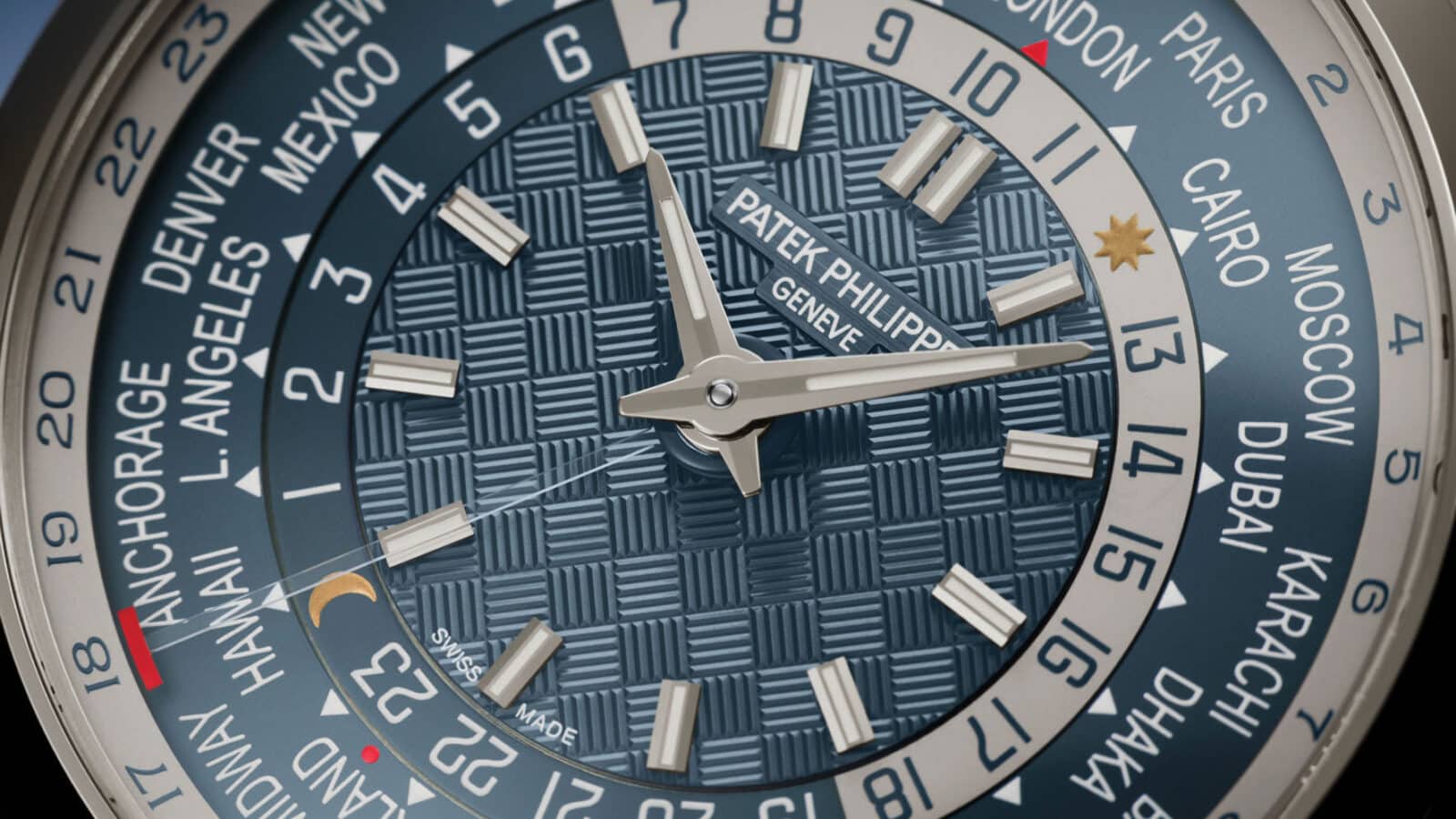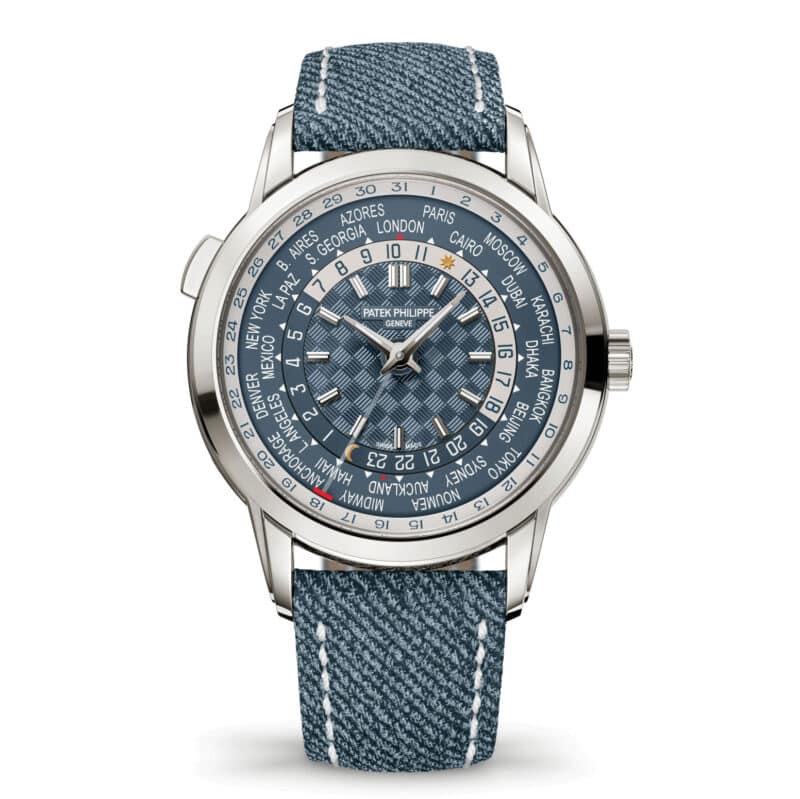Patek Philippe Reference 5330G — world time watch that adjusts date
This Japanese-only limited edition Patek Philippe Reference displays the local time in world cities, and will adjust the date as needed when travelling

Blue-grey opaline finish dial centre
Next time you stagger off a long-haul flight and squint into the midday sun as your body clock tells you that you should really be tucked up in bed, think back to 1884. That was the year of the International Meridian Conference in Washington DC, at which the world was subdivided into 24 time zones with each 15 degree zone east or west of the Greenwich Meridian representing one hour of time ahead or behind respectively.
It was a sensible idea, but it did create the inconvenience of having to adjust one’s timepiece whenever a new zone was crossed in to – although, with steam trains being set to hold their position as the fastest objects on earth for another 25 years, the problem of jet lag was still a long way off.
Things began to change at the dawn of the 20th century when the great liners opened up a whole new world of travel. Suddenly, crossing from one continent to another became easier, and the well-heeled who could afford to do so began to hanker after a watch which could not only tell them the time at destination, but the time back home, too.

The date adjusts automatically either at midnight or when crossing the International Date Line.
They had to wait until 1931 when a genius watchmaker called Louis Cottier perfected the first world time pocket watch. This micro mechanical masterpiece was so fiendishly clever that it simultaneously showed the time in multiple cities by means of an inner dial with hands and 12 hour markers that was encircled by a 24-hour ring which, in turn, was bordered by an outer ring printed with the names of important cities.
The 24-hour ring was linked to the hour and minute hands in such a way that, as the latter turned clockwise to show local time, the former turned anti-clockwise – meaning the time in any given city could be determined by whichever number on the 24-hour ring it was aligned with.
The world time watch was born – and the conundrum of how to make a globetrotter’s timepiece which is accurate, easy to use and aesthetically pleasing has been amusing the horological boffins ever since. But none, it is probably fair to say, has bettered Cottier’s original.
Although his mechanism was adopted by a handful of makers, it’s best associated with Patek Philippe, which initially used it in various wrist and pocket watches until production ceased in 1965. After it had been out of the catalogue for 35 years, however, Patek re-introduced the World Timer – since when it has evolved into models with enamelled dials, as well as with additional functions such as a chronograph, a date display, a moon phase mechanism and even a minute repeater.
But this year the celebrated maker has introduced a new feature to the model that even the ingenious Cottier might never have imagined: a date mechanism that, when necessary, automatically adjusts itself backwards or forwards when a new time zone is entered. First available only in Japan in a 300-piece special edition, the Reference 5330G has now entered Patek Philippe’s main collection.
Like all Patek Philippe watches, it’s reassuringly expensive at £65,600 – which might seem a lot, but really isn’t bad considering it gets you all the time in the world.
Patek Philippe Reference 5330G, £65,600. patek.com
